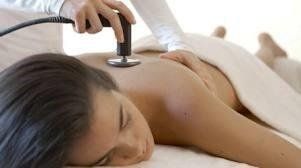TECAR therapy
Resistive and capacitive therapy is a therapeutic method based on transferring heat to the human body. The use of heat as a treatment for various ailments has been known for many years: it provides relief in chronic, traumatic, and inflammatory conditions, increases blood flow, improving the nutrition and oxygenation of cells and accelerating the removal of toxins, enhances the extensibility of connective tissue, reduces joint stiffness, pain, and muscle spasms, and aids in the reabsorption of haematomas and oedemas.
Originally developed in professional sports to meet the demand for tangible results and faster recovery times, Tecar therapy is now a valuable support in other areas of medicine, ranging from phlebolymphology to rheumatology, pain therapy to aesthetic medicine.
Conditions such as inflammations, minor muscle injuries, contractures, circulatory deficits, or lymphoedemas can be treated with significant benefits for the patient, starting from the first session.
INDICATIONS
The main indications for Tecar therapy include:
- Post-surgical rehabilitation
- Tendinitis and bursitis
- Sprains
- Cervicalgia
- Cervicobrachialgia
- Muscle injuries
- Tendon injuries
- Ligament injuries
- Contusions
- Bone injuries
- Osteoarticular injuries
- Capsulitis
- Chronic pain
- Plantar fasciitis
CONTRAINDICATIONS
There are no true contraindications for Tecar therapy. However, as with all electro-medical devices, it is not recommended for patients with pacemakers or pregnant women. The absence of side effects allows Tecar therapy to be applied immediately after trauma, enabling rapid motor recovery. It can also be combined with other physiotherapy treatments.
EXECUTION
Each Tecar therapy session lasts about 30 minutes. During the therapy, two electrodes are used: one capacitive and one resistive, applied with an opposing plate to the electrode.
The capacitive electrode works effectively on the muscles and improves the efficiency of the venous and lymphatic systems. It is used in the initial phase of the treatment to relax the muscles and remove any contractures, and is often associated with a manual technique similar to massage therapy.
The resistive electrode treats tendons, ligaments, bone tissue, and cartilage. It is particularly effective in resolving contractures and muscle strains. It also allows for the combination of the instrument's effectiveness with active and passive joint mobilisation, involving the patient directly and enabling the therapist to be as effective as possible in treating both inflammatory and degenerative conditions.
The session ends with a drainage treatment using the capacitive electrode to remove any inflammatory catabolites responsible for the pain.
RESULTS
The results obtained after a Tecar therapy session include:
- Increased metabolic activity
- Faster tissue repair
- Increased circulation and lymphatic drainage due to vasodilation produced by heat, and better tissue oxygenation.
ADVANTAGES
Compared to other therapies, Tecar therapy does not irradiate energy from the outside. This allows it to treat even deep layers that cannot be reached with external energy transfers due to skin damage. Furthermore, it is possible to treat a selected area of the body in a homogeneous manner.
Being a non-invasive therapy, it is completely painless and effective from the first session.
Our operators:
Dell'Aira Ruben





